Mahogany Cant Lumber
- September 21, 2023
- 0 comment
Mahogany cant lumber is often revered as a masterpiece of nature’s craftsmanship. Its origin lies in the heartwood of Swietenia trees (Swietenia macrophylla), a hardwood species predominantly found in the lush tropical forests of Central and South America. What truly sets mahogany apart is its enduring aesthetic appeal. Initially, it presents itself with a captivating reddish-brown hue, a mere hint of the richness it will develop over time. As the wood matures, this color deepens into a luxurious and sumptuous shade that exudes warmth and sophistication. The grain patterns of mahogany are a testament to nature’s artistry, featuring interlocking, ribbon-like swirls that dance across its surface.

This unique combination of color and grain makes mahogany cant lumber an exquisite choice for those who seek to create pieces of timeless beauty. Whether it graces the design of a classic antique armoire or enhances the sleek lines of a contemporary dining table, mahogany effortlessly marries itself to various design aesthetics. Beyond its aesthetic charms, mahogany cant lumber earns its esteemed reputation through its remarkable mechanical properties. Born from the heart of tropical hardwood trees, mahogany is endowed with exceptional strength and stability. It’s the wood of choice for crafting items intended to endure generations, from heirloom furniture to the sturdy beams in architectural marvels. However, its appeal transcends its robustness.
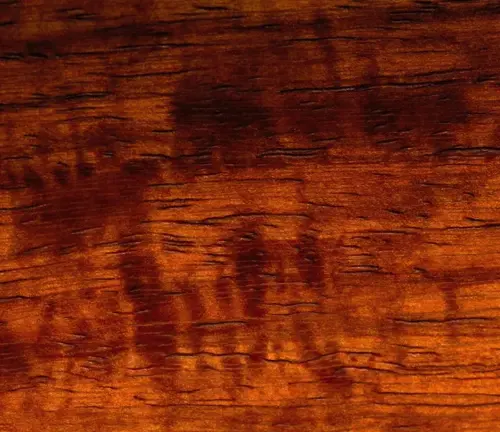
Mahogany is a woodworker’s dream, responsive to the touch of artisans’ hands and the precision of their tools. It welcomes the blade of a saw, yielding to the chisels of carvers, and effortlessly submits to the smoothing embrace of sandpaper. Its uniform texture and low tendency to warp or split provide woodworkers with a canvas for their creativity. With mahogany, artisans can shape intricate details, achieving a level of precision and finesse that elevates their craft to an art form.
| Specifications | Description |
| Wood Species | Mahogany (Swietenia species) |
| Dimensions | 6×6, 8×8, and 10×10 |
| Color | Rich reddish-brown (light pinkish-brown to deep red) |
| Grain Pattern | Straight to interlocking, fine, uniform, sometimes slightly wavy |
| Texture | Fine to medium texture, smooth and even surface |
| Density and Hardness | Dense hardwood with Janka hardness rating of approximately 800 to 1,000 lbf |
| Workability | Easily cut, planes smoothly, holds fine details, excellent stability |
| Sustainability | Consider certifications like FSC for responsible sourcing |
| Finishing | Takes finishes, stains, and coatings well |
| Applications | Versatile, used in furniture, cabinetry, boat building, musical instruments, and more. |
Mahogany Cant Lumber
Mahogany cant lumber, sourced from the heartwood of Swietenia trees in the tropical regions of Central and South America, is renowned for its exquisite beauty, unmatched durability, and exceptional workability. In this article, we will explore the fascinating world of Mahogany Cant Lumber, delving into its origins, characteristics, applications, and the importance of responsible sourcing.

Preserving a Legacy
Mahogany cant lumber is a testament to nature’s artistry and the enduring allure of exceptional craftsmanship. Its timeless beauty, combined with its strength, workability, and commitment to sustainability, ensures that it stands as a symbol of enduring quality in the realm of woodworking. For artisans and designers, it is a medium to express creativity, and for those who appreciate fine craftsmanship, it is a symbol of timeless elegance. Mahogany cant lumber transcends mere material; it is an embodiment of enduring quality and timeless beauty in the world of woodworking. As we continue to celebrate its legacy, mahogany reminds us that craftsmanship, sustainability, and beauty can harmoniously coexist, creating a legacy that spans generations.
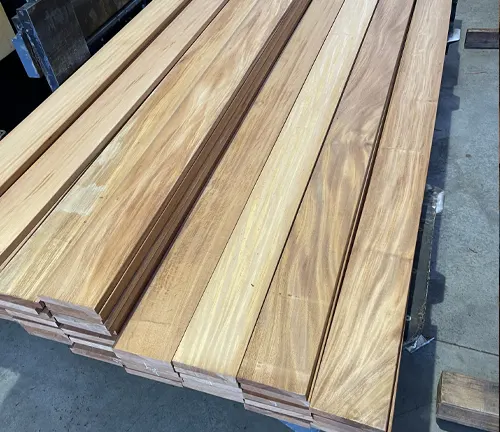
Mahogany’s Mechanical Prowess
Beyond its aesthetic appeal, mahogany cant lumber boasts remarkable mechanical properties. It is a dense hardwood with impressive strength and stability, rendering it ideal for applications that demand longevity and resilience. Whether used for crafting furniture, architectural details, or boatbuilding, mahogany’s inherent durability ensures that the resulting products can withstand the tests of time and wear.
The Artisan’s Dream
Woodworkers and artisans hold mahogany in high esteem for its exceptional workability. This timber responds beautifully to machining, carving, and sanding, allowing craftsmen to create intricate designs and attain smooth, flawless finishes with ease. Its consistent texture and minimal susceptibility to warping or twisting further enhance its appeal, enabling artisans to execute their creative visions with precision and finesse.
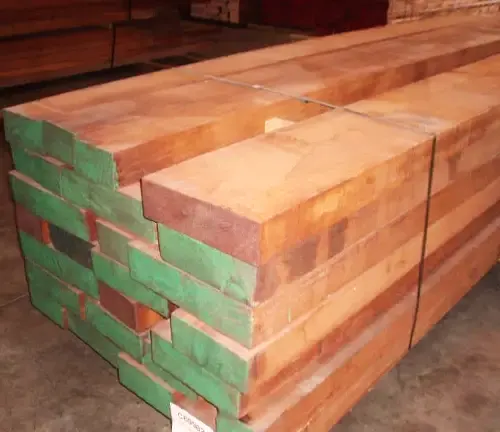
Strength and Versatility
Mahogany cant lumber is celebrated for its remarkable mechanical properties. As a dense hardwood originating from tropical forests, it exhibits exceptional strength and stability. This makes it the material of choice for crafting enduring pieces, from heirloom-quality furniture to structural components that stand the test of time. Beyond its robustness, mahogany is cherished for its workability. It welcomes the touch of artisans and the precision of their tools, cutting cleanly, planing smoothly, and holding intricate details with grace. Its uniform texture and resistance to warping or twisting make it a trusted companion in the hands of woodworkers.
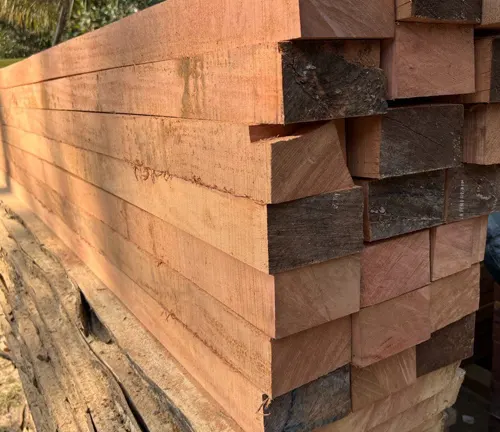
Investing in Excellence
Beyond its aesthetic and functional attributes, mahogany cant lumber holds significant value as an investment in craftsmanship and quality. Its unique blend of natural beauty, durability, and workability makes it a sound choice for artisans, woodworkers, and designers who seek to create enduring masterpieces.
When you choose mahogany cant lumber for your projects, you’re not merely selecting a material; you’re making a statement about your commitment to excellence. This wood, with its rich history and timeless allure, allows you to craft pieces that stand as testaments to your dedication to your craft.
Common Uses
Mahogany cant lumber is prized for its versatility and beauty, finding common use in a variety of applications. It’s a top choice in crafting elegant furniture like tables and cabinets, thanks to its rich color and intricate grain patterns. Musicians treasure it for creating musical instruments with exceptional tonal qualities. Mahogany’s resistance to water makes it essential in boat building, from traditional sailboats to modern yachts.

Artisans also turn to mahogany for antique restoration, preserving historical pieces. In architectural woodworking, it adds timeless elegance to interiors, used for doors, cabinetry, and more. Mahogany cant lumber remains a valuable asset in the world of woodworking and design.
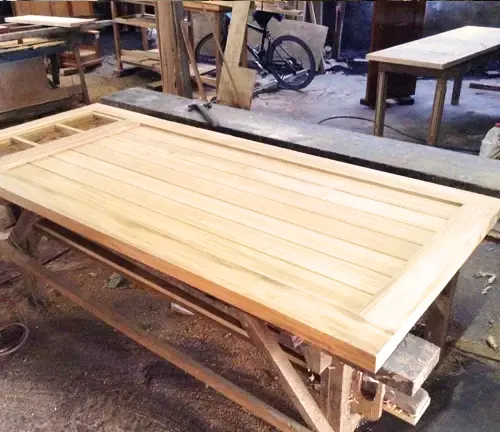
Frequently Asked Questions (FAQs)
- Is Mahogany Cant Lumber Sustainably Sourced?
Mahogany has a history of overharvesting and habitat destruction. However, responsible forestry practices and certifications like FSC (Forest Stewardship Council) are helping ensure the sustainability of mahogany. It’s crucial to source mahogany from reputable suppliers with a commitment to ethical and eco-friendly practices. - What Makes Mahogany Ideal for Musical Instruments?
Mahogany is prized in instrument-making for its unique tonal qualities. Its density and resonance contribute to warm, rich sound profiles, making it a preferred choice for crafting acoustic guitars, pianos, and other instruments. - Can Mahogany Cant Lumber Be Used for Exterior Applications?
While mahogany is renowned for its beauty and durability, it is primarily recommended for indoor use due to its sensitivity to prolonged exposure to the elements. For outdoor applications, like decking and exterior trim, alternative woods with higher resistance to moisture and weathering are often preferred. - Is There a Difference Between Various Mahogany Species?
Yes, there are several species of mahogany, and they can vary in color, grain pattern, and properties. For example, Swietenia macrophylla (Genuine Mahogany) and Swietenia mahagoni (American Mahogany) have distinct characteristics. It’s essential to be aware of these differences when selecting mahogany for a specific project. - What Is the Best Finish for Mahogany Cant Lumber?
Mahogany’s smooth texture and fine grain make it receptive to a range of finishes. Depending on the desired look and protection, options include natural oil finishes to enhance its natural color, clear lacquers for a glossy sheen, or stain and varnish combinations to achieve specific hues and durability. The choice often depends on the project’s aesthetics and intended use.









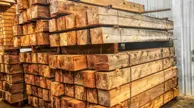



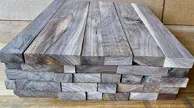
Leave your comment